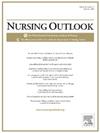Leader perspectives on the “experience-complexity gap”: Recommendations to fortify the nursing workforce
IF 3.7
2区 医学
Q1 NURSING
引用次数: 0
Abstract
Background
Reported workforce shifts, characterized as the “experience-complexity gap,” threaten nurses’ ability to deliver safe, high-quality care. Addressing this threat requires a robust understanding of the current state, which leaders in practice settings are well-positioned to elucidate.
Purpose
Describe practice leaders’ perceptions of (a) new-to-practice nurses’ (NTPNs) ability to practice competently, (b) the current composition of nursing teams, and (c) the impact of team composition on quality and safety, experienced nurses, and leaders.
Methods
A web-based survey was administered to practice leaders across the country. Responses were analyzed using descriptive statistics and conventional content analysis.
Discussion
Approximately 45% of respondents believe NTPNs practice competently. Specific skills gaps, measures to support NTPNs, the strain placed on experienced nurses to maintain the standard of care, generational conflict, and perceived risks to quality and safety are described.
Conclusion
These findings should inform academic and practice leaders’ partnered efforts to implement competency-based education.
领导者对“经验-复杂性差距”的看法:加强护理队伍的建议
据报道,劳动力转移被描述为“经验复杂性差距”,威胁到护士提供安全、高质量护理的能力。解决这一威胁需要对当前状态有充分的了解,而实践环境中的领导者有能力阐明这一点。目的描述实践领导者对以下方面的看法:(a)新入职护士(ntpn)胜任实践的能力,(b)护理团队的当前构成,以及(c)团队构成对质量和安全、经验丰富的护士和领导者的影响。方法采用网络调查的方法,对全国各地的实习领导进行调查。采用描述性统计和传统的内容分析对反馈进行分析。大约45%的受访者认为ntpn的实践能力很强。描述了具体的技能差距、支持ntpn的措施、经验丰富的护士为维持护理标准而承受的压力、代际冲突以及对质量和安全的感知风险。结论这些发现应该为学术和实践领导者合作实施能力本位教育提供参考。
本文章由计算机程序翻译,如有差异,请以英文原文为准。
求助全文
约1分钟内获得全文
求助全文
来源期刊

Nursing Outlook
医学-护理
CiteScore
6.20
自引率
7.00%
发文量
109
审稿时长
25 days
期刊介绍:
Nursing Outlook, a bimonthly journal, provides innovative ideas for nursing leaders through peer-reviewed articles and timely reports. Each issue examines current issues and trends in nursing practice, education, and research, offering progressive solutions to the challenges facing the profession. Nursing Outlook is the official journal of the American Academy of Nursing and the Council for the Advancement of Nursing Science and supports their mission to serve the public and the nursing profession by advancing health policy and practice through the generation, synthesis, and dissemination of nursing knowledge. The journal is included in MEDLINE, CINAHL and the Journal Citation Reports published by Clarivate Analytics.
 求助内容:
求助内容: 应助结果提醒方式:
应助结果提醒方式:


